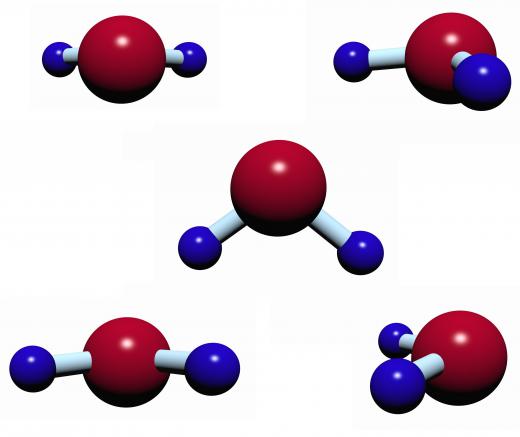At AllTheScience, we're committed to delivering accurate, trustworthy information. Our expert-authored content is rigorously fact-checked and sourced from credible authorities. Discover how we uphold the highest standards in providing you with reliable knowledge.
What is Artificial Photosynthesis?
Plants get their energy in a way that’s very different from the way people obtain energy. When a human needs energy, he eats food. When a plant needs energy, it uses the process of photosynthesis to take in carbon dioxide from the environment and use sunlight to convert it into sugars, which is the type of energy it needs to keep living. Scientists have been working to replicate the process of photosynthesis, trying to harness the sun's energy in a new, effective and ecologically friendly way, and the artificial photosynthesis research has yielded interesting results.
The ability to produce artificial photosynthesis was first announced in 2000, although research had been in the planning stages before then. Researchers relied on the Honda-Fujishima effect, which was discovered in 1953 and uses titanium dioxide as a photocatalyst. A photocatalyst accelerates processes relating to light and, in this case, energy.

Because of scientific and business interest in artificial photosynthesis and the desire for potential new products that could stem from it, the research field split into two sides. This produced two different results: photoelectrochemical cells and dye-sensitized solar cells. Each cell operates on different principles but tries to obtain the same result: artificial photosynthetic energy that can be harnessed and stored for later use, which would reduce the world's dependency on nonrenewable energy sources.

Photoelectrochemical cells, also referred to as PECs, use the electric current of water to create hydrogen and oxygen in a process called electrolysis. Electricity can then be stored in the hydrogen, which is an “energy carrier,” and the energy can be used later, such as in batteries. There are two types of PECs, one that uses semiconductor surfaces to absorb the solar energy and help split water molecules for energy use. The other variety uses dissolved metals to draw in solar energy and start the process of artificial photosynthesis. The most common metal catalysts for this type of reaction are cobalt and rhodium. Researchers from the Massachusetts Institute of Technology (MIT) have found these metals to be the most effective for this sort of work.

The other type of cell being researched, the dye-sensitized solar cell, is sometimes called a Gratzel cell or Graetzel cell. Like PECs, dye-sensitized artificial photosynthesis cells use a semiconductor to collect energy, usually silicon. In dye-sensitized cells, the semiconductor is used to transport the collected energy, and the photoelectrons, or energy particles, are separated and harnessed using special dyes. Gratzel cells are considered to be the most effective form of artificial photosynthesis currently available, as well as the most cost-efficient to manufacture. The disadvantages are mainly due to temperature concerns related to the liquid dyes, because these can freeze at lower temperatures and cease energy production, and expand at higher temperatures and break.
Research is still being performed in the field of artificial photosynthesis, especially in pursuit of finding better catalysts and energy transport mechanisms. While they are not the most effective form of energy production available, there is great interest in them still because of their high potential yield, low manufacturing cost and possible implications for the environment. If artificial photosynthesis could be made accessible and reliable, the world's dependency on nonrenewable fossil fuels could be greatly reduced.
AS FEATURED ON:
AS FEATURED ON:













Discuss this Article
Post your comments